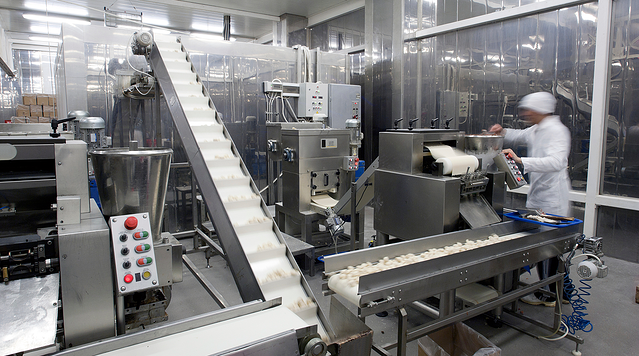Digital transformation technologies have the potential to give businesses more transparency, agility, and competitive advantage to name a few. So what’s stopping Australian businesses from adopting digital technologies now?Ai Group reports that although Australian businesses are investing in technologies to enhance profit and performance, industry as a whole is lagging in adoption of key innovations.
The feedback is similar wherever you go: Manufacturers and businesses say they, “don't know where to start” and ‘…don't have time or resources to access tech to know what's relevant to us” when asked about digitisation and the internet of things (IoT) strategy.
Plus they:
“…would like to know what others are doing to help us understand what's relevant and set a benchmark.”
To help answer some of these questions, we outline how organisations are using digital technologies now to enhance their operations. The simplicity of these applications may surprise you…
1. Gain enterprise-wide, real-time insights

Industry: Transport, Airports
Capability: IT/OT integration, real-time operational visibility
Any company trying to gain visibility into its operations has likely grappled with not being able to see and act on data to improve performance. A big part of this is in disparate information technology (IT) and operational technology (OT) systems.
In a move towards facility-wide visibility and control, Melbourne Airport integrated its IT and OT systems to allow one view of the entire airport’s operations in its Situational Awareness Platform. Multiple TIBCO technologies were used to integrate essential operational systems, such as landside transport, aircraft positioning, vehicle information, vehicle flow, flight schedules, fire systems, asset management systems, check in, and baggage handling.
The result allows airport managers, operators, and providers to visualize potential opportunities or threats that might affect the customer’s journey through the airport, and plan and react accordingly. The platform processes data from more than 2,000 aircraft, 1,000 airfield and terminal assets and 15 core operations systems. Read more.
How can I do it? From a project management point of view, don’t bite off more than you can chew. Instead, establish a solid foundation, then make scalable, incremental changes. You can achieve results by rolling out a new system in software iterations. This keeps complexity low, gives you control and gives you the ability to scale it later
2. Link the customer experience to production

Industry: Manufacturing, Food & Beverage
Capability: Paperless product traceability, automated business logic
Now more than ever manufacturers are under pressure respond to consumer demand for traceability and deliver outstanding customer service.
To address this challenge, a major Australian soft drink manufacturer implemented an information database system that connects the customer experience directly to production.
The solution involved making the production information system available to the Consumer Complaint hotline and applying a series of automated business rules. Each bottle’s product code could be traced back to the production facility, line, time of manufacture, and the line leader and shift manager details. This allowed the company to react in real-time to product issues but also gave the manufacturing teams visibility into the value and impression they create with their customer.
Now, instead of waiting for daily and weekly reporting, the company can identify and react to issues by the hour. The accuracy of complaint data was increased by up to 95 percent.
How can I do it? Automated business rules applied correctly can drastically improve response time and accuracy of any complaint data. Nukon can show you how to connect business systems to improve business agility, quality and customer service.
3. Successfully upgrade legacy software

Industry: Manufacturing: Wine packaging
Capability: Manufacturing Execution Systems (MES), production expansion
Many businesses make the mistake of thinking that replacing their legacy enterprise software will be catastrophic – the implied cost, impact on production and risk of poor uptake is high.
An international wine company’s MES upgrade, shows it’s not as difficult as you might think. The company’s Barossa Valley Wine Packaging Centre found it needed to replace an outdated and heavily customised MES, expand product output and remove risks of onsite data hosting – all in less than 12 months.
In this case it was as simple as optimizing an off-the-shelf vendor MES software. As a way of reducing impact on production and ensuring project success, Nukon delivered the MES for one pilot packaging line first. After being given the green light, the subsequent packaging lines were completed in the next 6 months.
The software platform can control and monitor events in real time, including pinpointing causes and times of downtime events, line status, goods consumption, shift reports, line speed trends. Finally, a remote data hosting solution enabled the company to carry out and monitor operations from its headquarters 750km away in Melbourne. Read more.
 The new MES allowed the business to meet a number of drivers including upgrading legacy software and product packaging line expansion.
The new MES allowed the business to meet a number of drivers including upgrading legacy software and product packaging line expansion.
How can I do it? Don’t get stuck thinking your legacy system is too hard to replace. Nothing is too hard to achieve with the right approach. Nukon can roll out the transition in a managed way to reduce impact on production, as it did with the packaging centre’s pilot line and subsequent lines
4. Reduce data management costs
Industry: Utilities, Water
Capability: Configuration and database management
Often, obsolete systems can mean the company is spending more than it should on process data management.
An Australian water utility addressed this problem by harnessing the latest database technology. A series of business mergers meant the utility had to integrate water asset software and operational systems into one statewide integrated operations centre. The result was a time consuming configuration management process, whereby multiple databases had to be administered.
The Nukon ClearSCADA to PI Sync tool was the solution. It allowed data to be synced from the ClearSCADA system to the data historian, thus removing the need to manage two separate configuration databases.
This provided a ‘single source of truth’ for all time-series data, with zero duplication in process and maximum data integrity. The sync tool is capable of synchronising an unlimited number of data points and structures. This system is expected to grow in excess of 200,000 points and can be extended further as needed.
It has drastically reduced configuration management overheads.
How can I do it? Automate wherever you can. Low-value, error-prone, repeatable processes – such as configuration management between systems – are good candidates for process improvement and automation. By reducing administrative burden, teams are more able to focus on higher-value activities. Nukon can help you determine the business case, ROI and implement an appropriate solution.
5. Optimise supply chain for zero wastage, max product life
Industry: Manufacturing, Food & Beverage, Supply Chain
Capability: Product forecasting, scheduling and tracking framework
Companies that supply fresh produce across broad distribution networks must have a reliable scheduling and supply chain framework, or else face product wastage on a mass scale.
A major supermarket chain realised they needed a smart, integrated system to address this challenge after opening a $150 million dollar facility to supply a national distribution network with a highly perishable product. The company implemented a 'pull model' system, where raw materials were managed for maximum efficiency, driven by actual store order demand. Three core areas were addressed: forecasting, scheduling and traceability.
A new model for forecasting raw ingredient orders reduced wastage, storage and handling. Meanwhile the planning and scheduling frameworks were integrated, which enabled the entire system to share data and respond accordingly to demand. Finally, greater traceability was achieved through integrating standard shipping and tracking codes across the supply chain. This meant that all raw ingredients were able to be scanned into the processing plant, tracked through product packing and scanned at various stages of delivery to the store. Read more.
The chain achieved an increased product shelf life by an average of 1.5 days. Because the product was shipped directly to stores there was no more storage requirements, this saving equating to saving $50 per pallet. Finally, the ‘delivery in full, on time’ goal of 98.5 percent achieved.
How can I do it? Identify where data in your supply chain is and isn’t flowing. Nukon can help you map out what data exists in your business, where data is siloed in disparate systems, and what paper based systems might be constraining data flow. We can then help you prioritise where reductions in waste can be made.
Summary
Companies who are harnessing digital technologiesaren’t doing it ‘just to follow a trend’. As these cases highlight, companies are using the right technological solution to address specific challenges and respond to market demands. This is how we recommend you taking advantage of digital disruptors going forward.
In the end the technology is only half of the battle. Truly transformational projects will have focused on people, processes and the technology to achieve results. Read how you can effectively manage business improvement projects by downloading our free guide ‘Managing BI projects in manufacturing: The ultimate Guide to Drive Effective Change’.





